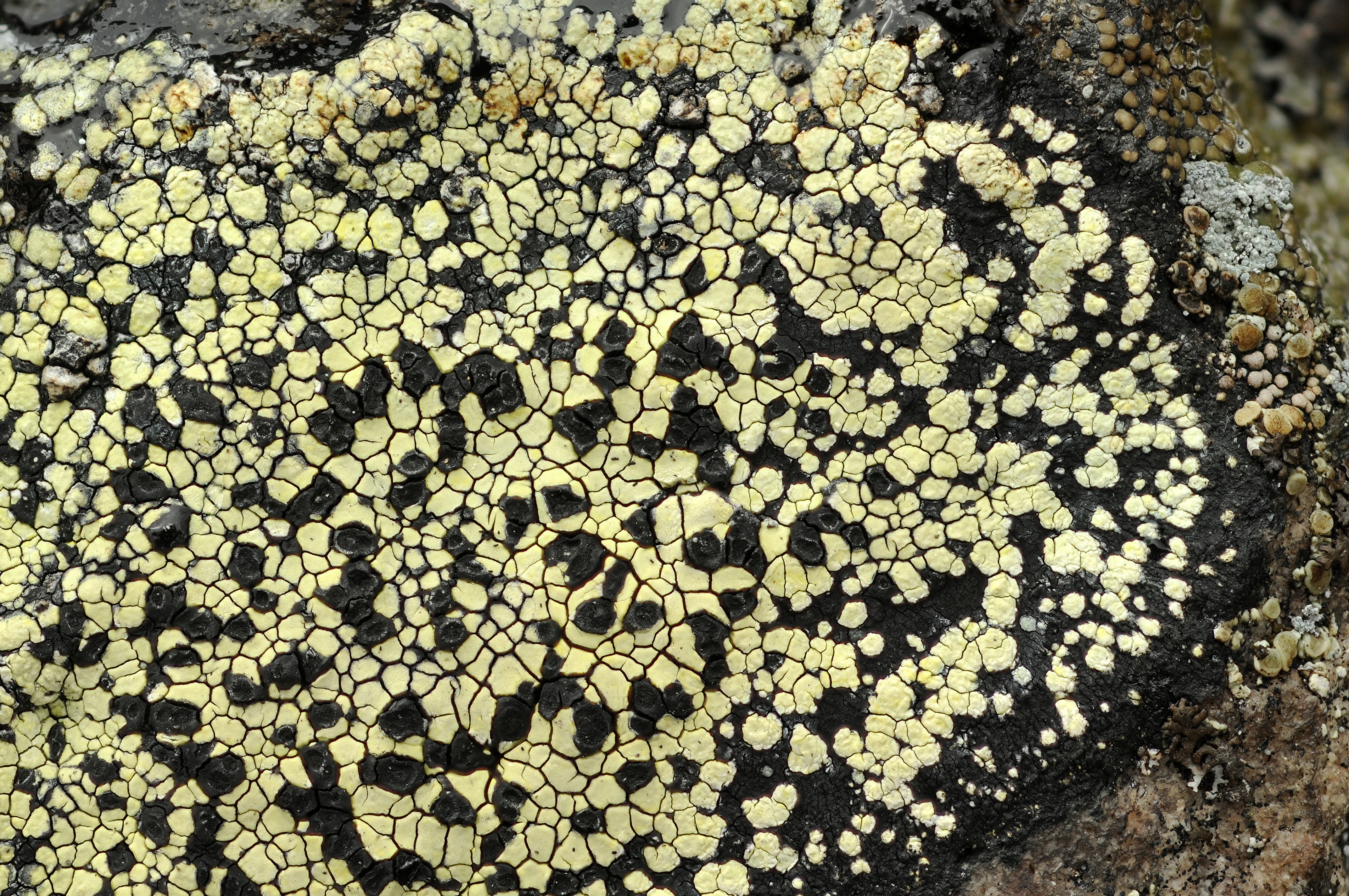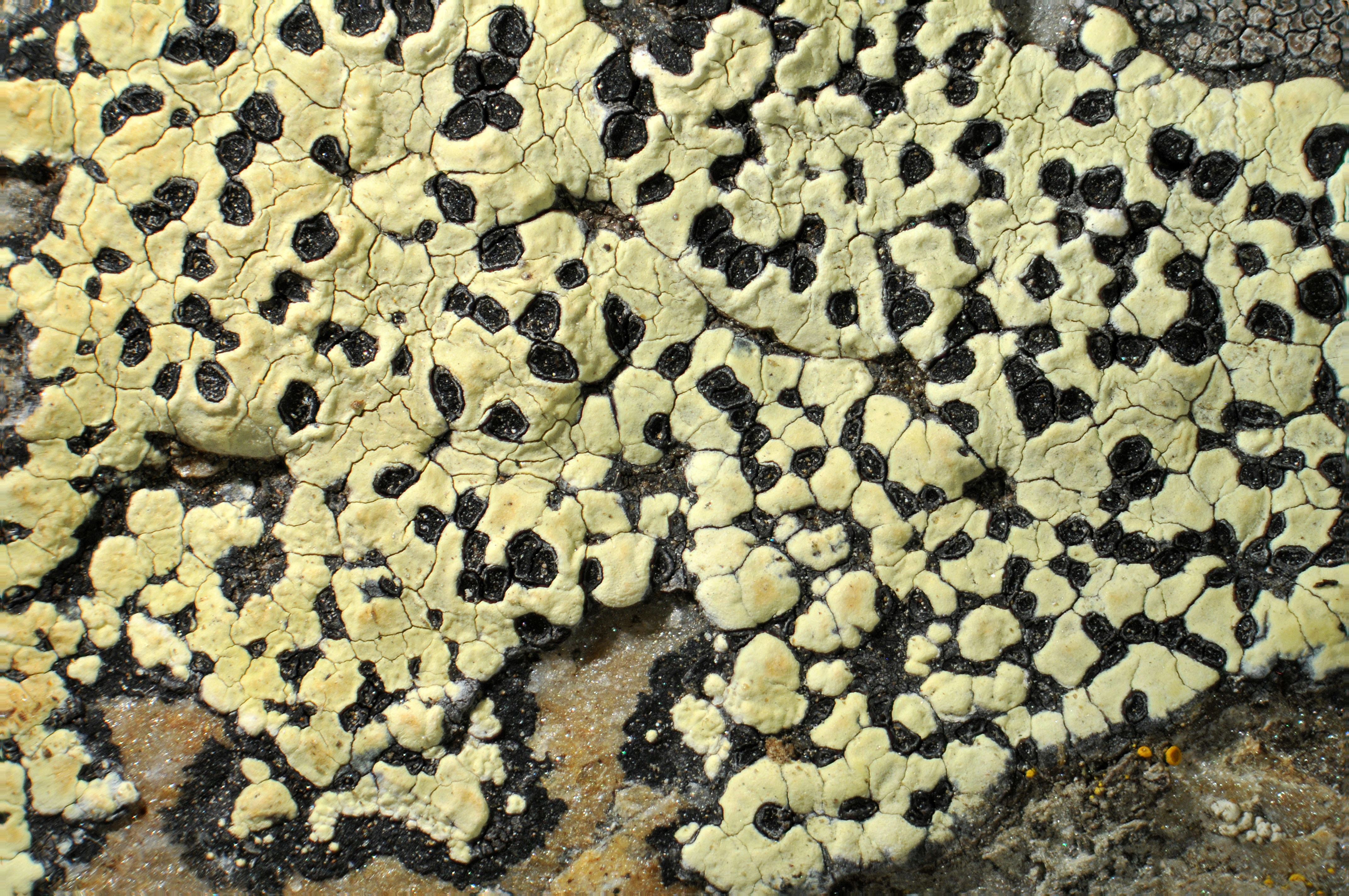Rhizocarpon atroflavescens
- Innhold
- Morphology
- Chemistry
- Habitat
- Comment
- Look-alikes
Morphology
Thallus areolate or partly rimose, up to 3 cm diam. or several thalli confluent; prothallus well developed, black, usually white pruinose; areolae up to 1.2 mm diam., bright yellow, dull, usually faintly white pruinose, contiguous, thick, angular, plane to moderately convex, smooth; medulla KI+ dark violet. – Apothecia up to 0.8 mm diam., black, epruinose, orbicular to angular, plane to slightly concave, with a thin margin; excipulum brownish black, K+ red; hypothecium dark brown, K–; hymenium colourless; epihymenium medium brown, K+ red; no crystals or granules in the apothecia; ascospores 8 per ascus, (1–) 3-septate to submuriform, often of irregular size and shape, dark greenish brown, 10–24 × 6–10 µm. – Conidiomata not seen.
Chemistry
Rhizocarpic acid, sometimes also psoromic acid; spot tests: medulla PD– or PD+ yellow, K–, C–.
Habitat
On calciferous rock in the mountains. Sparingly collected.
Comment
The species differs from R. geographicum in the white pruniose hypothallus and the somewhat smaller, less septate ascospore. A white pruinose prothallus occurs also in R. saananse, but that species has larger and eumuriform ascospores.


